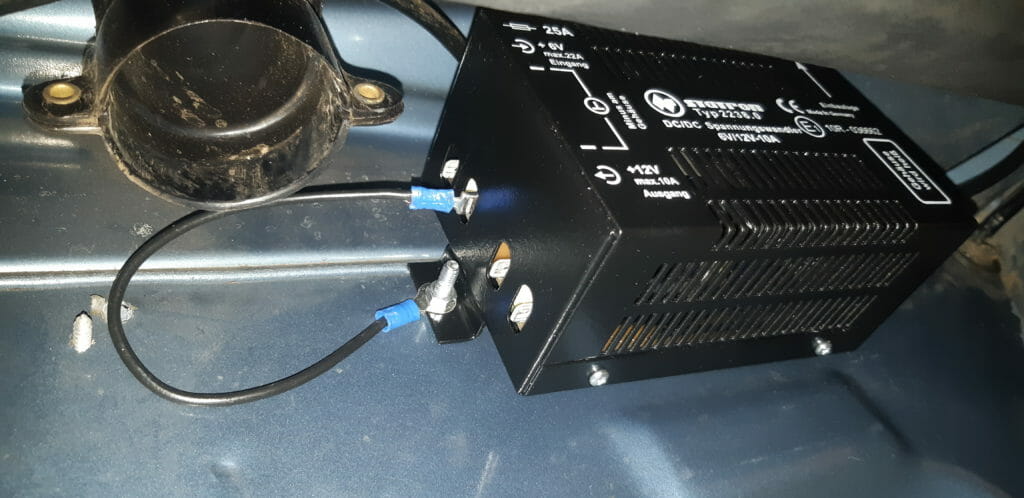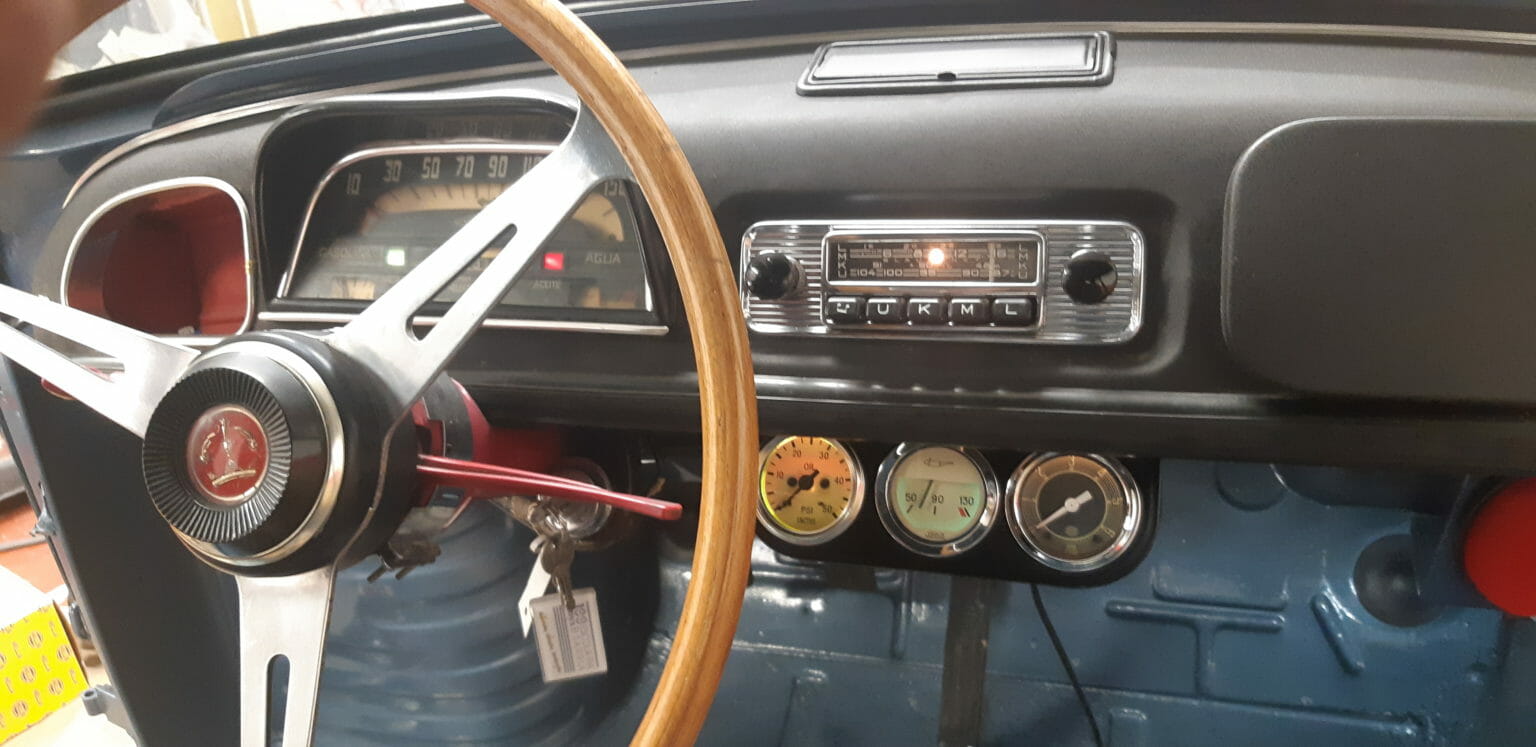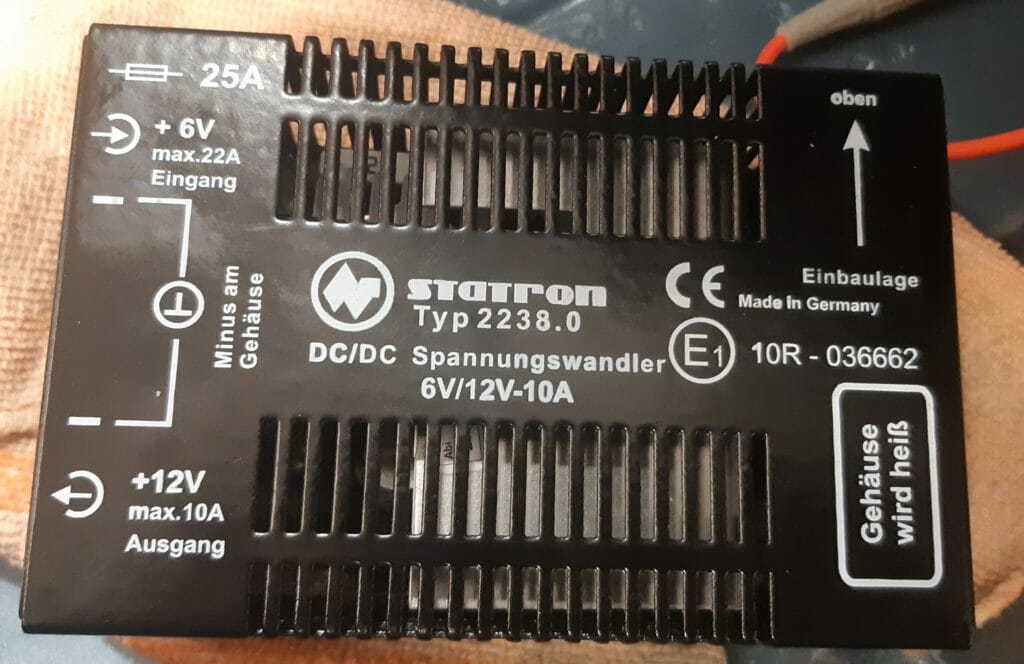Share in:
And which converter to use to make them work smoothly:
Many of the vehicles manufactured before 1965 were equipped with a 6V electrical system. This includes many of the VW Beetle, the Renault 4CV, the first Citröen 2CV, the first series of the Renault Dauphine/Gordini and a list that gets bigger the further back in time you go. Even many of the English roadsters of that time, although they had a 12V installation (such as the MGA), this was achieved by mounting two 6V batteries in series.
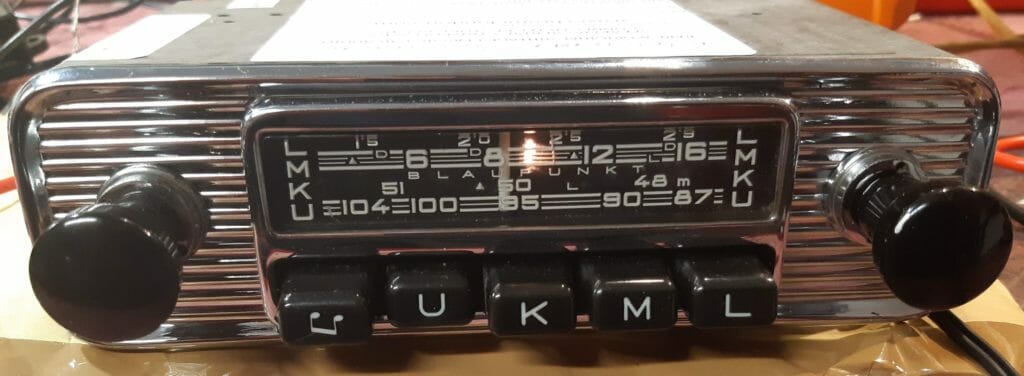
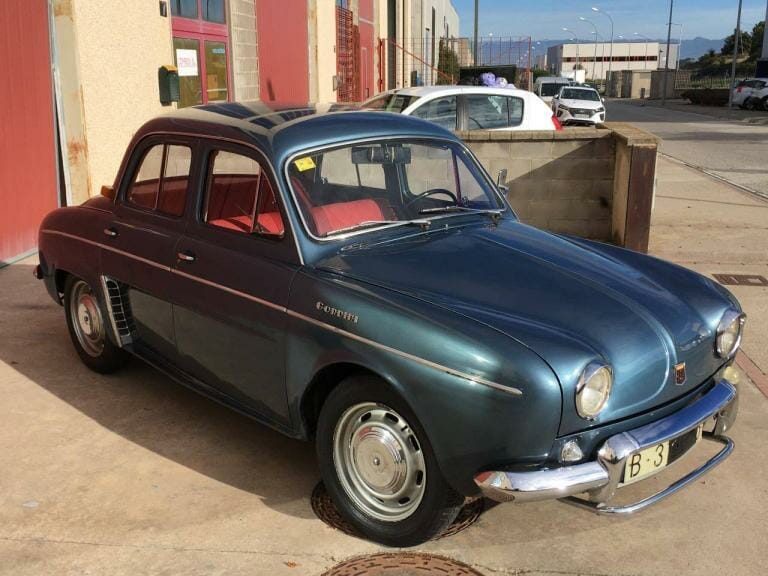
In the event that you are the lucky owner of a classic car that comes equipped with a 6V installation, you may find yourself in the position of having to install an automotive accessory, which, perhaps, will operate at 12V. Some people goes for the project of converting the entire system of the vehicle to 12V, but perhaps you may not have the time, the opportunity, or simply the desire to do it.
The case I describe here happened to us with our Renault Dauphine Gordini. It is a 1963 unit manufactured by FASA-Spain, and was probably one of the last manufactured 6V cars of this model. To this unit, we installed the Blaupunkt Essen radio featured in this article. It is worth mentioning that there are radios from this period (approx. 1960-65) from brands such as Blaupunkt, Becker, and others, with voltage selector 6-12V as well as polarity selection for GROUND (ground)=NEG or GROUND(ground)=POS. But on this occasion, this 12V and negative-ground model was the one we were able to find.
The result could not have been more dissapointing: The radio (still installed outside the car) generated a noise similar to the one of AC current, at such a high level that it completely masked the audio in the reception, -literally making it impossible to use-.
In reality, by the nature of their operation/design, these DC Boosters are native generators of electrical noise (somewhat similar to switching power supplies). So if what you want to power is a device that is not sensitive to electrical noise (e.g., a set of lamps, headlights, or the like), you will have no problem. But if you want to power something so sensitive to electrical noise as a radio, then you may have problems.
In our case, we did all possible tests: shielding the entire installation, testing different types and ground connections, installing anti-parasites in the power supply, and all the changes and tests we could think of: No improvement. In fact, I remember looking at the output signal of the converter through an oscilloscope and seeing that it was far from the flat signal you could expecte from a DC battery.
If you are interested in the subject, you can read this article about the noise associated with DC-DC boosters.
The solution
We found the solution on a Renault Dauphine forum in France. One of the forum members was talking about a STATRON® brand converter which worked very well. Since all the tests with the previous models of converters (several were tested) had not been successful, and on the other hand had been made in the Blaupunkt radio a significant investment in restoration by the company. Chrome London we didn’t want to lose, we decided to buy this converter. This is the device:
We installed it on our Dauphine to power both the car radio and two additional instruments installed on the dashboard (with their corresponding lighting). The result: Zero noise from parasites. Problem solved
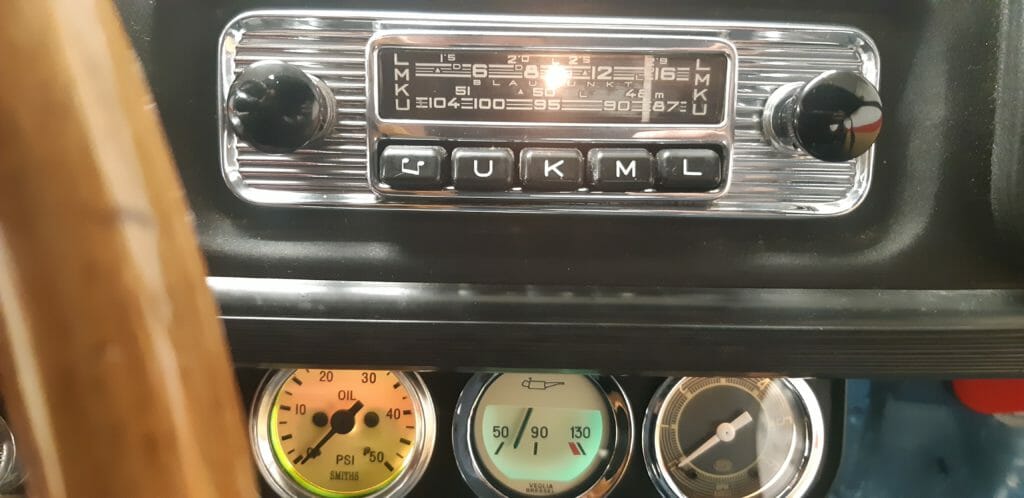
You can buy it at AMAZON in Germany. It is around 100 Euros (at the date of publication of this post). At least for Spain, there is no shipping problem.
Installation:
In our Dauphine, the device is installed behind the glove box, on the passenger side. So that it is completely invisible. In this photo neither the inlet nor the outlet are connected yet. The device allows devices connected to the 12V output to use the same car ground without problems (I mention this because I had seen some converters that recommended NOT sharing the input negative with the output negative, making it quite complicated to use in a car).
